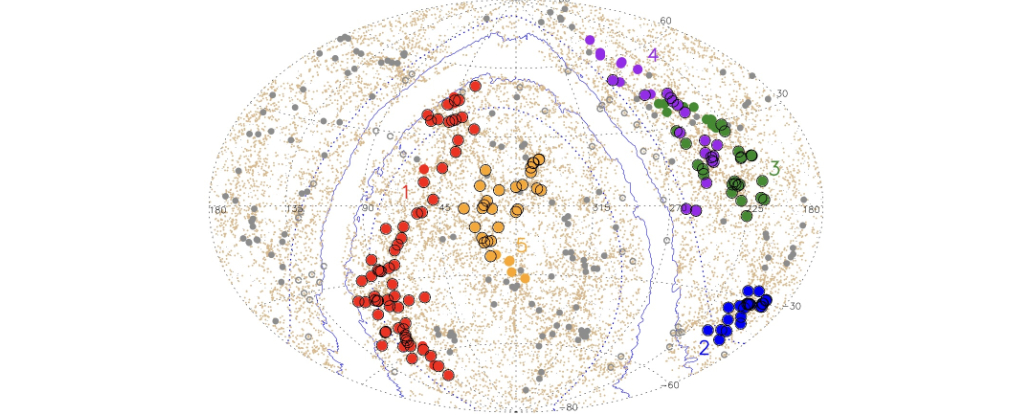Designing a Scalable Shuffle Service for Big Data on AWS
Introduction Shuffle operations are a critical component of distributed data processing frameworks like Apache Spark. The "Magnet: Push-based Shuffle Service" paper introduces an optimized shuffle service for large-scale Spark workloads, reducing shuffle overhead and improving efficiency. In this post, we design a fully AWS-native approach to solving similar shuffle performance bottlenecks using Amazon EMR, S3, and other AWS services. Understanding the Shuffle Problem In distributed computing, shuffle is the process of transferring intermediate data between map and reduce tasks. Traditional Spark shuffle operations suffer from: Disk and Network Bottlenecks: Reading and writing shuffle data incurs high I/O costs. Scalability Issues: Large-scale clusters experience significant delays in shuffle-heavy jobs. Data Skew: Uneven distribution of keys across partitions leads to straggler tasks. The "Magnet" approach improves shuffle efficiency by merging small shuffle data files into large blocks and proactively co-locating data closer to compute resources. We aim to achieve similar optimizations using AWS-native solutions. Step 1: Choosing the Right AWS Architecture AWS offers various services that can be leveraged to build a scalable shuffle service: - Amazon EMR: A managed big data processing framework for running Apache Spark, Presto, and Hadoop. - Amazon S3: Object storage that can serve as external shuffle storage. - Amazon FSx for Lustre: High-performance distributed file system that can reduce shuffle read/write overhead. - AWS Glue: Can be used for ETL jobs with optimized data processing pipelines. - Amazon EC2 Placement Groups: Reduce network latency by ensuring physical proximity of compute nodes. For this design, we will use Amazon EMR with S3-backed shuffle storage and FSx for Lustre for high-speed temporary data handling. Step 2: Configuring Amazon EMR for Optimized Shuffle a) Selecting the Right EC2 Instances For shuffle-heavy workloads, we recommend: - Compute-Optimized (C5, C6g) Instances: High CPU power for intensive computations. - Memory-Optimized (R5, R6g) Instances: Useful for reducing disk spill during shuffle operations. - Storage-Optimized (I3, I4i) Instances: Provides NVMe SSD storage for fast temporary shuffle data access. b) Using FSx for Lustre as Shuffle Storage Amazon EMR can be configured to use FSx for Lustre instead of local disks for temporary shuffle data: aws emr create-cluster \ --applications Name=Spark \ --ec2-attributes InstanceProfile=EMR_EC2_DefaultRole \ --instance-type c5.4xlarge \ --instance-count 5 \ --use-default-roles \ --configurations '[{"Classification":"spark-defaults","Properties":{"spark.local.dir":"/fsx"}}]' This configuration redirects shuffle data to FSx for Lustre, reducing disk bottlenecks. c) Enabling Dynamic Resource Allocation Dynamic resource allocation optimizes resource usage by scaling executors based on load: spark.dynamicAllocation.enabled true spark.shuffle.service.enabled true spark.dynamicAllocation.minExecutors 2 spark.dynamicAllocation.maxExecutors 100 Step 3: Optimizing Data Locality and Network Efficiency a) Using Cluster Placement Groups By placing EMR instances in cluster placement groups, we minimize inter-node network latency: aws ec2 create-placement-group --group-name spark-shuffle --strategy cluster Attach this placement group when launching EC2 instances for the EMR cluster. b) Using S3 for External Shuffle Storage Amazon EMRFS allows shuffle data to be stored in Amazon S3 instead of local disks, reducing failure risks: spark.hadoop.fs.s3a.committer.magic.enabled true spark.shuffle.io.preferDirectBufs true This enables optimized shuffle writes to S3, avoiding small file overhead. Step 4: Monitoring and Auto-Scaling a) Enabling CloudWatch for Shuffle Monitoring Set up CloudWatch metrics to monitor shuffle-related performance issues: aws cloudwatch put-metric-alarm \ --alarm-name ShuffleDiskUsageHigh \ --metric-name DiskReadBytes \ --namespace AWS/EMR \ --statistic Average --threshold 80 \ --comparison-operator GreaterThanThreshold \ --evaluation-periods 2 \ --period 300 \ --actions-enabled This alerts when shuffle disk usage exceeds 80%. b) Auto-Scaling EMR Cluster Configure auto-scaling to dynamically adjust the cluster size: aws emr modify-instance-groups --cluster-id j-XXXXXX --instance-groups InstanceGroupId=ig-XXXXXX,InstanceCount=50 Conclusion By leveraging AWS services like Amazon EMR, FSx for Lustre, and S3, we can design a highly scalable shuffle service that minimizes disk bottlenecks and improves network efficiency. This approach provides: - Cost savings by dynamically scaling compute resources. - Improved performance through data locality and optimized shuffle operations. - Resilience by leveraging S3 for persistent storage instead of local disk failures. This AWS-native solution effe

Introduction
Shuffle operations are a critical component of distributed data processing frameworks like Apache Spark. The "Magnet: Push-based Shuffle Service" paper introduces an optimized shuffle service for large-scale Spark workloads, reducing shuffle overhead and improving efficiency. In this post, we design a fully AWS-native approach to solving similar shuffle performance bottlenecks using Amazon EMR, S3, and other AWS services.
Understanding the Shuffle Problem
In distributed computing, shuffle is the process of transferring intermediate data between map and reduce tasks. Traditional Spark shuffle operations suffer from:
- Disk and Network Bottlenecks: Reading and writing shuffle data incurs high I/O costs.
- Scalability Issues: Large-scale clusters experience significant delays in shuffle-heavy jobs.
- Data Skew: Uneven distribution of keys across partitions leads to straggler tasks.
The "Magnet" approach improves shuffle efficiency by merging small shuffle data files into large blocks and proactively co-locating data closer to compute resources. We aim to achieve similar optimizations using AWS-native solutions.
Step 1: Choosing the Right AWS Architecture
AWS offers various services that can be leveraged to build a scalable shuffle service:
- Amazon EMR: A managed big data processing framework for running Apache Spark, Presto, and Hadoop.
- Amazon S3: Object storage that can serve as external shuffle storage.
- Amazon FSx for Lustre: High-performance distributed file system that can reduce shuffle read/write overhead.
- AWS Glue: Can be used for ETL jobs with optimized data processing pipelines.
- Amazon EC2 Placement Groups: Reduce network latency by ensuring physical proximity of compute nodes.
For this design, we will use Amazon EMR with S3-backed shuffle storage and FSx for Lustre for high-speed temporary data handling.
Step 2: Configuring Amazon EMR for Optimized Shuffle
a) Selecting the Right EC2 Instances
For shuffle-heavy workloads, we recommend:
- Compute-Optimized (C5, C6g) Instances: High CPU power for intensive computations.
- Memory-Optimized (R5, R6g) Instances: Useful for reducing disk spill during shuffle operations.
- Storage-Optimized (I3, I4i) Instances: Provides NVMe SSD storage for fast temporary shuffle data access.
b) Using FSx for Lustre as Shuffle Storage
Amazon EMR can be configured to use FSx for Lustre instead of local disks for temporary shuffle data:
aws emr create-cluster \
--applications Name=Spark \
--ec2-attributes InstanceProfile=EMR_EC2_DefaultRole \
--instance-type c5.4xlarge \
--instance-count 5 \
--use-default-roles \
--configurations '[{"Classification":"spark-defaults","Properties":{"spark.local.dir":"/fsx"}}]'
This configuration redirects shuffle data to FSx for Lustre, reducing disk bottlenecks.
c) Enabling Dynamic Resource Allocation
Dynamic resource allocation optimizes resource usage by scaling executors based on load:
spark.dynamicAllocation.enabled true
spark.shuffle.service.enabled true
spark.dynamicAllocation.minExecutors 2
spark.dynamicAllocation.maxExecutors 100
Step 3: Optimizing Data Locality and Network Efficiency
a) Using Cluster Placement Groups
By placing EMR instances in cluster placement groups, we minimize inter-node network latency:
aws ec2 create-placement-group --group-name spark-shuffle --strategy cluster
Attach this placement group when launching EC2 instances for the EMR cluster.
b) Using S3 for External Shuffle Storage
Amazon EMRFS allows shuffle data to be stored in Amazon S3 instead of local disks, reducing failure risks:
spark.hadoop.fs.s3a.committer.magic.enabled true
spark.shuffle.io.preferDirectBufs true
This enables optimized shuffle writes to S3, avoiding small file overhead.
Step 4: Monitoring and Auto-Scaling
a) Enabling CloudWatch for Shuffle Monitoring
Set up CloudWatch metrics to monitor shuffle-related performance issues:
aws cloudwatch put-metric-alarm \
--alarm-name ShuffleDiskUsageHigh \
--metric-name DiskReadBytes \
--namespace AWS/EMR \
--statistic Average --threshold 80 \
--comparison-operator GreaterThanThreshold \
--evaluation-periods 2 \
--period 300 \
--actions-enabled
This alerts when shuffle disk usage exceeds 80%.
b) Auto-Scaling EMR Cluster
Configure auto-scaling to dynamically adjust the cluster size:
aws emr modify-instance-groups --cluster-id j-XXXXXX --instance-groups InstanceGroupId=ig-XXXXXX,InstanceCount=50
Conclusion
By leveraging AWS services like Amazon EMR, FSx for Lustre, and S3, we can design a highly scalable shuffle service that minimizes disk bottlenecks and improves network efficiency. This approach provides:
- Cost savings by dynamically scaling compute resources.
- Improved performance through data locality and optimized shuffle operations.
- Resilience by leveraging S3 for persistent storage instead of local disk failures.
This AWS-native solution effectively addresses large-scale shuffle challenges faced in big data workloads.












































































